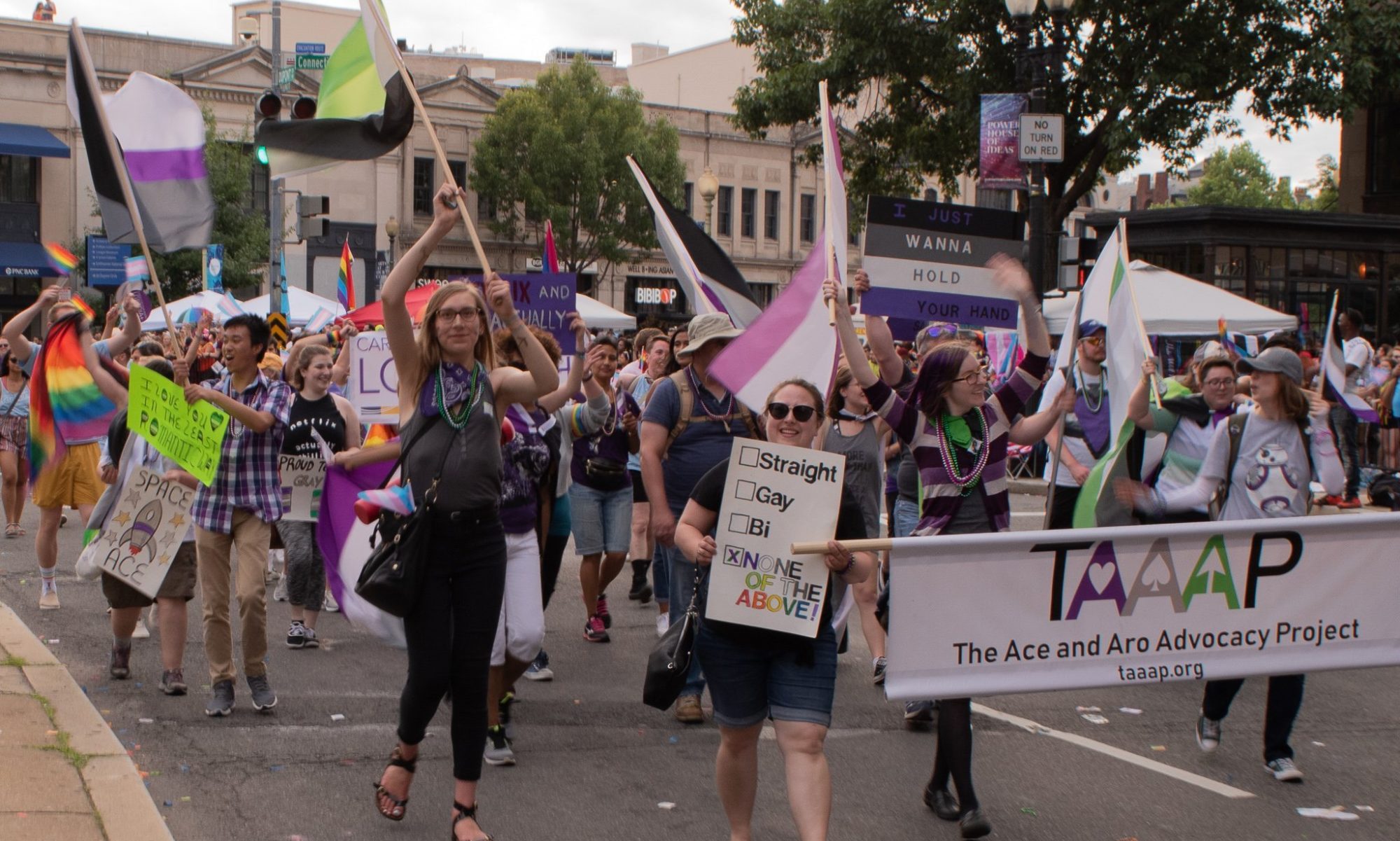Despite a lack of public knowledge regarding asexuality, asexual (ace) people make up a substantial part of the populations on college campuses. According to the American College Health Association’s National College Health Assessment (ACHA-NCHA II) in 2016, 6% of the 95,761 respondents said they were asexual. Similarly, 4.6% of the 104,208 respondents to the University of California Campus Climate Survey in 2014 also stated that they were asexual. For more in-depth information on the basics of asexuality, please click here.
With asexuals making up such a large portion of the people on college campuses, it is important that colleges and universities take steps to make sure they are being ace-inclusive. In order to assist in this effort, TAAP has assembled the following guide for ace inclusion on college campuses:
First Things First
We strongly suggest mentioning asexuality on your website. Please refrain from mentioning allies without mentioning asexual students, especially when defining the LGBTQIA+ acronym. This has an implied, though likely unintentional, message that everyone except asexual students are welcome. For example, when explaining who is welcome at an LGBTQIA+ club:
- DON’T say: “Lesbian, Gay, Bisexual, Transgender, Queer, Questioning, Intersex, and Ally students”
- DO say: “Lesbian, Gay, Bisexual, Transgender, Queer, Questioning, Intersex, and Asexual students” or “Lesbian, Gay, Bisexual, Transgender, Queer, Questioning, Intersex, Asexual, and Ally students”
In addition, it can be helpful to provide educational resources online and/or posted at a physical space such as an LGBTQ center. Many asexual people go years of their life not knowing asexuality is an option, and this can make a major difference to a questioning student who relates with the term.
Next Steps
Please consider starting an asexuality focus group (“Ace Space”), especially if you have similar groups for other identities. These in-person communities can have a significant positive impact on the emotional well-being of asexual people, and many aces do not have access to the offline ace community. In order to start such a group, it is recommended to explicitly welcome asexual students to general LGBTQ+ events and/or host an informative event about asexuality in order to identify interested students. If you would like further assistance with starting an Ace Space, or you would like to find a speaker on asexuality, please contact TAAP.
Advocacy Across Campus
The subject areas in which asexual students are most likely to encounter practices insensitive to asexuality are the fields of psychology, counseling, and sex education. This applies to both classes the students are taking as well as resources provided to the students. In most cases, all that is needed to be inclusive in these areas is acknowledgement of asexuality as a legitimate sexual orientation. Please consider providing university staff in these and other areas with training on ace inclusion.
